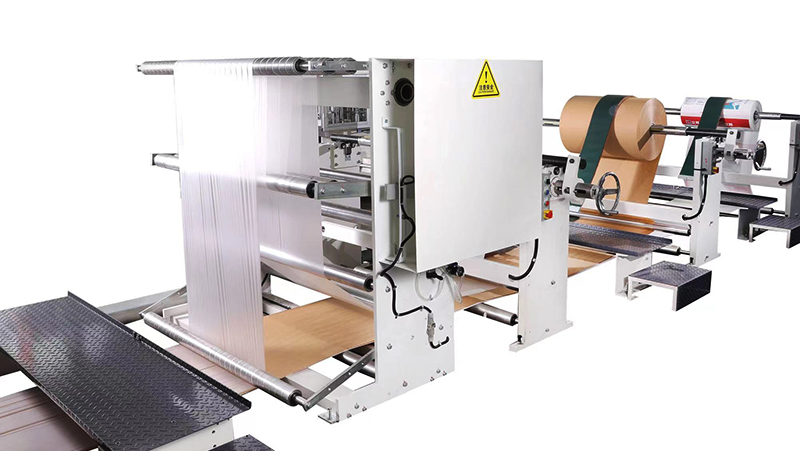Advancing Zero-Waste Paper Bag Production: A Breakthrough in Sustainable Packaging Technology
Release time:2025-05-15 Classification:Knowledge
The global shift toward sustainability has driven significant innovation in packaging solutions, with zero-waste paper bag production emerging as a cornerstone of eco-conscious manufacturing. This technology redefines traditional methods by prioritizing resource efficiency, waste reduction, and circularity, offering a scalable model for industries aiming to minimize environmental impact. Below, we explore the technical advancements, operational frameworks, and ecological benefits of modern zero-waste paper bag manufacturing processes.

1. The Foundation of Zero-Waste Paper Bag Technology
Zero-waste production begins with the careful selection of raw materials. Manufacturers prioritize post-consumer recycled (PCR) paper fibers, agricultural residues, and responsibly sourced wood pulp certified by recognized forestry standards. These materials undergo rigorous processing to remove contaminants, ensuring high-quality input for bag production. Advanced pulping systems recover nearly 100% of usable fiber, while non-recyclable byproducts are repurposed into secondary products like insulation materials or biofuel feedstock.
Key to this phase is the integration of closed-loop water systems, which recycle and purify water used during pulping and bleaching. This reduces freshwater consumption by up to 90% compared to conventional methods, addressing a critical pain point in paper manufacturing.
2. Precision Engineering in Production
Modern zero-waste paper bag manufacturing relies on automated, digitally optimized systems to minimize material loss. Computer-aided design (CAD) software generates precise templates that maximize paper sheet utilization, reducing offcuts by over 95%. Laser-guided cutting machines execute these designs with micron-level accuracy, while real-time monitoring systems adjust parameters to account for material inconsistencies.
Adhesive application is another area of innovation. Plant-based, non-toxic adhesives derived from starch or cellulose replace petroleum-based alternatives, ensuring biodegradability without compromising bond strength. Excess adhesive is captured and reused, eliminating chemical waste.
3. Energy Efficiency and Emission Reduction
Zero-waste facilities prioritize renewable energy integration. Solar arrays, biomass boilers, and waste-to-energy systems power production lines, often achieving carbon-neutral operations. Heat recovery units capture thermal energy from machinery, repurposing it for drying processes or facility heating.
Emissions are further mitigated through closed-system ventilation that filters particulate matter and volatile organic compounds (VOCs). Carbon capture technologies, though still emerging, are being piloted to neutralize residual emissions, aligning with net-zero goals.
4. Circular Lifecycle Management
The end-of-life phase is integral to zero-waste systems. Bags are designed for easy disassembly, with water-soluble inks and minimal mixed-material components to streamline recycling. Partnerships with municipal recycling programs ensure bags re-enter the production cycle as PCR material.
For non-recyclable scenarios, compostable formulations enable decomposition within 180 days under industrial conditions. Such bags meet ASTM D6400 standards, breaking down into non-toxic biomass without microplastic residue.
5. Industry Impact and Scalability
The adoption of zero-waste paper bag technology has reshaped packaging economics. While initial setup costs for advanced machinery and renewable infrastructure are higher, long-term savings from reduced material waste, energy efficiency, and regulatory compliance offset investments. The technology also aligns with Extended Producer Responsibility (EPR) mandates, positioning manufacturers as leaders in sustainability.
Scalability remains a focal point. Modular production units allow smaller manufacturers to adopt zero-waste practices incrementally, while large-scale facilities benefit from economies of scale. Cross-industry collaborations are accelerating R&D, particularly in enhancing the durability and water resistance of eco-friendly bags for diverse applications.
6. Future Directions and Challenges
Ongoing research aims to refine material blends, such as incorporating mycelium-based reinforcements or algae-derived coatings, to improve functionality. Blockchain-enabled traceability systems are also being tested to verify sustainable sourcing and production claims.
Challenges persist, including the need for standardized global certifications and infrastructure upgrades in developing regions. However, the convergence of policy support, consumer demand, and technological progress suggests a transformative trajectory for zero-waste paper bag production.
Zero-waste paper bag production technology represents a paradigm shift in sustainable manufacturing, merging ecological responsibility with industrial efficiency. By eliminating waste at every stage—from raw material processing to end-of-life recovery—this approach sets a new benchmark for the packaging industry. As innovation continues to drive down costs and enhance performance, zero-waste paper bags are poised to become the default choice for businesses and consumers committed to a circular economy.






